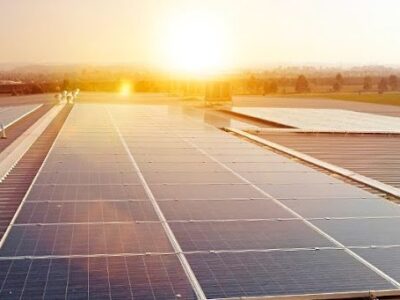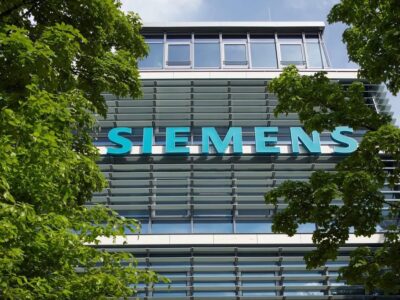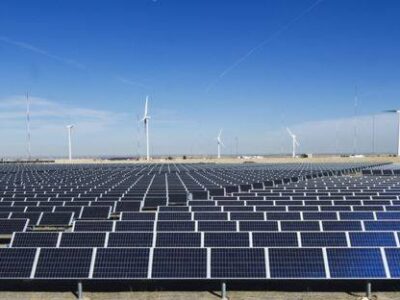Every day wind turbines are becoming more efficient and capturing more energy with each rotation. General Electric (GE) recently made headlines with their Haliade-X wind turbines which can power a home for two days with just one rotation. However, as turbines get more efficient, their blades need to be replaced. What do you do with the decommissioned blades? A new partnership between GE and Veolia North America (VNA), a transnational water, energy, and waste management company, is turning retired wind turbines into sustainable cement. “VNA and GE currently have a four-year contract to process 80,000 tons of blades” Chris Howell, Senior Director of Recycling Operations for Veolia North America’s Environmental Solutions and Services, shared with The Business Download. “We expect such an effective collaboration for years to come.”
Wind turbine blades are predominantly composed of strong and flexible fiberglass, so Veolia worked out a process to breakdown the elements composing the blade into the same chemicals used to make traditional cement. “Recycling a single seven-ton blade in this way enables the cement kiln to avoid consuming nearly five tons of coal, 2.7 tons of silica, 1.9 tons of limestone, and nearly one ton of additional mineral-based raw materials (according to an environmental impact analysis conducted by sustainability consulting group Quantis U.S.)” Howell said. “More than 90 percent of the blade can be recycled, with the goal to achieve 97 – 98 percent recyclability by year-end.” Roughly 65 percent of the blade is broken down into cement with the other 28 percent shredded and consumed as fuel for the cement kilns, according to a press release. Additionally, the kiln will operate with 27 percent less CO2 emissions and 13 percent less water, making it more efficient and environmentally friendly.
As the existing wind turbines in the United States mature, more blades will be replaced with newer, more efficient blades, but there aren’t many options for recycling or repurposing the old blades. This partnership between GE and VNA represents the first commercialization of recycled wind turbine blades, and through the program, VNA has expanded their Louisiana, Missouri manufacturing facility. Not only does this create new clean energy jobs in the area, but it creates a viable channel for disposing of these decommissioned blades responsibly. “We have hired several additional employees that are focused on the Louisiana operations as well as our field service operations for the wind turbine blade repurposing,” shared Howell. “If the market size allows, there may be the opportunity to establish other final finishing and blending facilities all across the country.”
The cement created through this first-of-its kind partnership is no different than cement manufactured through traditional means. “The physical and chemical characteristics of the cement are no different than cement made without wind turbine blade repurposed engineered materials,” according to Howell. As more building firms look to reduce their environmental impact, this cement has a unique selling point of sustainable production. This Partnership between GE and VNA is only the tip of the iceberg for VNA’s “Renewable Energy Circular Economy Solutions,” and the firm is taking a global approach to the maturing renewable energy generators in the world. As more wind farms look to retire or replace aging turbines, it’s important to develop and refine channels that ensure they are recycled responsibly.





